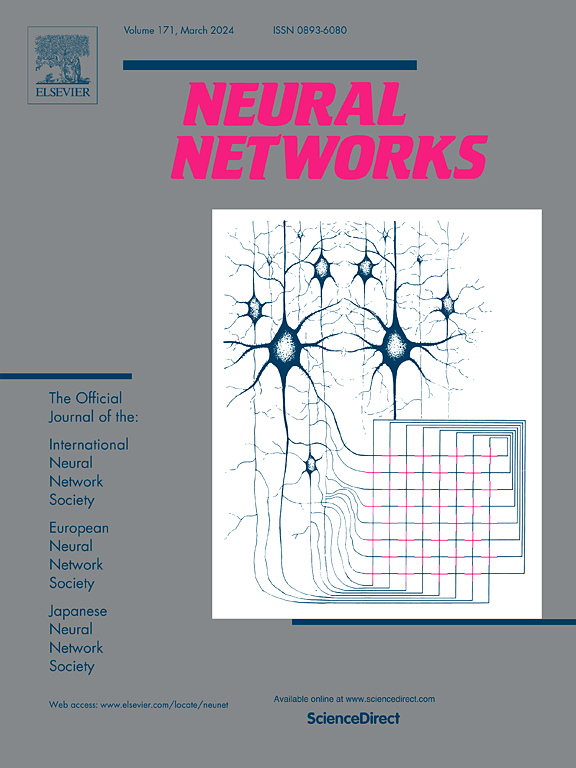Dynamic domain generalization for medical image segmentation
IF 6.3
1区 计算机科学
Q1 COMPUTER SCIENCE, ARTIFICIAL INTELLIGENCE
引用次数: 0
Abstract
Domain Generalization-based Medical Image Segmentation (DGMIS) aims to enhance the robustness of segmentation models on unseen target domains by learning from fully annotated data across multiple source domains. Despite the progress made by traditional DGMIS methods, they still face several challenges. First, most DGMIS approaches rely on static models to perform inference on unseen target domains, lacking the ability to dynamically adapt to samples from different target domains. Second, current DGMIS methods often use Fourier transforms to simulate target domain styles from a global perspective, but relying solely on global transformations for data augmentation fails to fully capture the complexity and local details of the target domains. To address these issues, we propose a Dynamic Domain Generalization (DDG) method for medical image segmentation, which improves the generalization capability of models on unseen target domains by dynamically adjusting model parameters and effectively simulating target domain styles. Specifically, we design a Dynamic Position Transfer (DPT) module that decouples model parameters into static and dynamic components while incorporating positional encoding information to enable efficient feature representation and dynamic adaptation to target domain characteristics. Additionally, we introduce a Global-Local Fourier Random Transformation (GLFRT) module, which jointly considers both global and local style information of the samples. By using a random style selection strategy, this module enhances sample diversity while controlling training costs. Experimental results demonstrate that our method outperforms state-of-the-art approaches on several public medical image datasets, achieving average Dice score improvements of 0.58%, 0.76%, and 0.76% on the Fundus dataset (1060 retinal images), Prostate dataset (1744 T2-weighted MRI scans), and SCGM dataset (551 MRI image slices), respectively. The code is available online (https://github.com/ZMC-IIIM/DDG-Med).
医学图像分割的动态域泛化。
基于域泛化的医学图像分割(DGMIS)旨在通过学习跨多个源域的全标注数据,增强分割模型在未知目标域上的鲁棒性。尽管传统的DGMIS方法取得了进展,但它们仍然面临着一些挑战。首先,大多数DGMIS方法依赖于静态模型对未知目标域进行推理,缺乏动态适应不同目标域样本的能力。其次,目前的DGMIS方法通常使用傅里叶变换从全局角度模拟目标域的样式,但仅依靠全局变换进行数据增强无法完全捕获目标域的复杂性和局部细节。针对这些问题,本文提出了一种医学图像分割的动态域泛化方法,该方法通过动态调整模型参数和有效模拟目标域样式,提高了模型在未知目标域上的泛化能力。具体而言,我们设计了一个动态位置转移(DPT)模块,该模块将模型参数解耦为静态和动态组件,同时结合位置编码信息,以实现有效的特征表示和对目标域特征的动态适应。此外,我们还引入了一个全局-局部傅里叶随机变换(GLFRT)模块,该模块同时考虑了样本的全局和局部风格信息。该模块采用随机风格选择策略,在控制训练成本的同时增强了样本多样性。实验结果表明,我们的方法在几个公共医学图像数据集上优于最先进的方法,在眼底数据集(1060张视网膜图像)、前列腺数据集(1744张t2加权MRI扫描)和SCGM数据集(551张MRI图像切片)上的平均Dice得分分别提高了0.58%、0.76%和0.76%。代码可在网上获得(https://github.com/ZMC-IIIM/DDG-Med)。
本文章由计算机程序翻译,如有差异,请以英文原文为准。
求助全文
约1分钟内获得全文
求助全文
来源期刊

Neural Networks
工程技术-计算机:人工智能
CiteScore
13.90
自引率
7.70%
发文量
425
审稿时长
67 days
期刊介绍:
Neural Networks is a platform that aims to foster an international community of scholars and practitioners interested in neural networks, deep learning, and other approaches to artificial intelligence and machine learning. Our journal invites submissions covering various aspects of neural networks research, from computational neuroscience and cognitive modeling to mathematical analyses and engineering applications. By providing a forum for interdisciplinary discussions between biology and technology, we aim to encourage the development of biologically-inspired artificial intelligence.
 求助内容:
求助内容: 应助结果提醒方式:
应助结果提醒方式:


